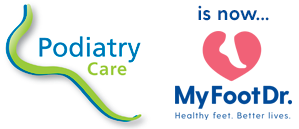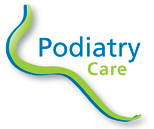Your Children’s Feet
You worry about your child’s teeth, and other parts of the body. You teach washing, brushing, and grooming, but what do you do about your child’s feet – those developing feet which have to carry the entire weight of the body throughout an entire lifetime?
Many adult foot ailments, like other bodily ills, have their origins in childhood and are present at birth. Periodic professional attention and regular foot care can minimize these problems in later life.
Neglecting foot health at an early age invites problems in other parts of the body, such as the legs and back. Postural problems and poor balance can be the result of poor foot posture and hypermobility. There can also be undesirable personality effects. The youngster with troublesome feet may walk or run awkwardly and poor general posture can cause many other health issues. As a result, the growing child may become shy, introverted, and avoid athletics, sport and social functions. Consultation between the podiatrist, pediatrician, and other medical specialists can help to resolve these related problems.
Your Baby’s Feet
The human foot – one of the most complicated parts of the body – has 26 bones, and is laced with ligaments, muscles, blood vessels, and nerves. Because the feet of young children are soft and pliable, abnormal pressure can easily cause deformities.
A child’s foot grows rapidly during the first year, reaching almost half their adult foot size. This is why foot specialists consider the first year to be the most important in the development of the feet.
Here are some suggestions to help you assure that this development proceeds normally:
- Look carefully at your baby’s feet. If you notice something that does not look normal to you, seek professional care immediately. Deformities may not be out-grown by themselves.
- Cover your child’s feet loosely. Tight covers restrict movement and can retard normal development.
- Provide an opportunity for exercising the feet. Lying uncovered enables the baby to kick and perform other related motions which prepare the feet for weight-bearing.
- Change the baby’s position several times a day. Lying too long in one spot, especially on the stomach, can put excessive strain on the feet and legs.
Starting to Walk
It is unwise to force a child to walk. When physically and emotionally ready, the child will walk. Comparisons with other children are misleading, since the age for independent walking ranges from 10 to 18 months.
When the child first begins to walk, shoes are not necessary indoors. Allowing the youngster to go barefoot or to wear just socks helps the foot to grow normally and develop its musculature and strength, as well as the grasping action of toes. Of course, when walking outside or on rough services, babies’ feet should be protected in lightweight, flexible footwear made of natural materials.
Growing Up
As a child’s foot continues to develop, it may be necessary to change shoe and sock size every few months to allow room for the feet to grow. Although foot problems result mainly from injury, deformity, illness, or hereditary factors, improper footwear can aggravate pre-existing conditions. Shoes or other footwear should never be handed down.
The feet of young children are often unstable because of muscle problems which make walking difficult or uncomfortable. A thorough examination by a podiatrist may detect an underlying defect or condition which may require immediate treatment or consultation with another specialist. The Australian Podiatry Association has long known of the high incidence of foot defects among the young, and recommends foot health examinations for school children on a regular basis.
Sports Activities
Millions of Australian children participate in team and individual sports, many of them outside the school system, where advice on conditioning and equipment is not always available. Parents should be concerned about children’s involvement in sports that require a substantial amount of running and turning, or involve contact. Protective taping of the ankles is often necessary to prevent sprains or fractures.
Parents should consider discussing these matters with their family podiatrist if they have children participating in active sports. Sports-related foot and ankle injuries are on the rise as more children actively participate in sports.
Advice for Parents
Significant problems noticed at birth will not usually just disappear by themselves. You should not wait until the child begins walking to take care of the problem.
Remember that lack of complaint by a youngster is not a reliable sign. The bones of growing feet are so flexible that they can be twisted and distorted without the child being aware of it.
Walking is the best of all foot exercises. Walking patterns must be carefully observed. Does the child toe in or toe out, have knock knees, or other gait abnormalities? These problems can be corrected if they are detected early.
Contact Podiatry Care if you have any concerns about your child and ask about our special GAP FREE offer for children.


